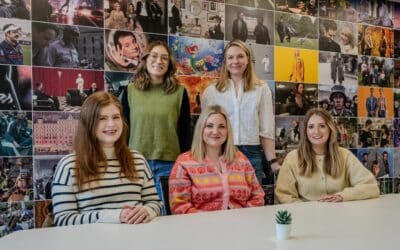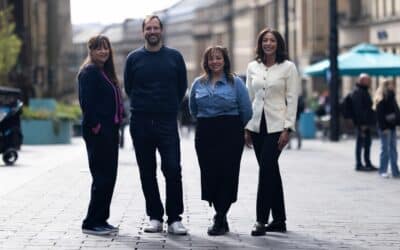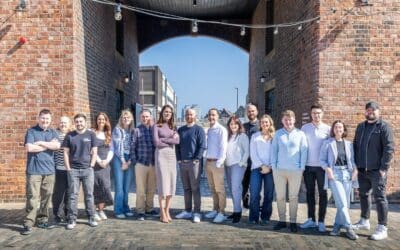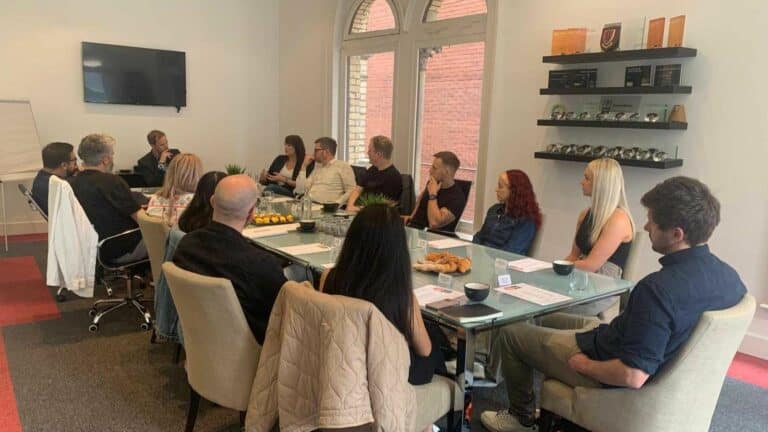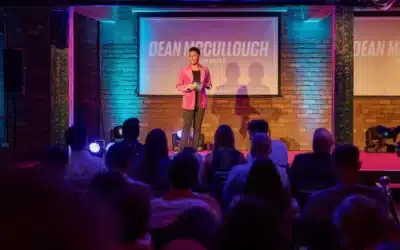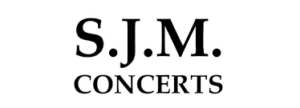Northern creative leaders recently gathered for a roundtable discussion to share insights on the challenges and opportunities with recruiting and retaining talent, looking at how culture can inspire creative and the future with AI.
Following their award wins from Prolific North’s inaugural Creative Awards, which took place on 29th June held at Museum of Science and Industry (MOSI), the leaders gathered for a lively discussion at Sedulo’s stunning offices in Manchester.
Attendees:
- Catalina Noguera, Admin assistant, Crowd Network
- Steve Jones, Content director, Crowd Network
- Jason Yeoman, Head of sales, Digia
- Louise Jones, Producer, Glasgows
- Maisie Trelfa, Digital marketing assistant, Digia
- Tom Littler, Head of Creative, Glasgows
- Gavin Shore, Executive creative director, McCann Leeds
- Adele Booth, Creative lead, McCann Leeds
- Elizabeth Taylor, Senior account director, Premier
- Rick Guttridge, Managing director, Smoking Gun
- Carla Nuttall, Head of strategic communications, TfGM
- Jo Taylor, Head of brand, design & digital, TfGM
- Mike Scott, Executive creative director, THG Studios
- Ross Trigg, Group creative director, THG Studios

David Prior (Prolific North) and Russell McGrath (Sedulo) welcomed the attendees, with McGrath introducing business advisory firm Sedulo, outlining its continued growth with four offices across the UK.
As a sponsor for one of the awards’ special categories – the Creative Courage Award – Gavin Shore (McCann Leeds) explained how he’s seen lots of changes in the last three decades with many agencies disappearing over time.
“We believe we are hugely creative in the North,” he said, adding that he’s keen to continue building the talent pool in the North, ensure that talent remains in the region, and celebrate their successes.
The conversation turned to the challenges facing creative businesses when it comes to finding and retaining talent.
Louise Jones (Glasgows), noticed more recruits were chasing inner-city locations, often opting for the likes of MediaCity or Manchester city centre, but a shift in remote and hybrid working has helped as staff can now work from anywhere. There are now more and more freelancers popping up, says Tom Littler (Glasgows) which Mike Scott (THG Studios) has spotted too.
Shore (McCann Leeds) pointed out that although the agency is often getting thousands of global applicants, the “challenge” is in finding the right talent.
Jo Taylor (TfGM) said she’s seen the same, the volume of applicants have “quadrupled” but it’s about finding the “right people”. Carla Nuttall (TfGM) said shifting work practices can lead to retention issues as staff can now move around easily to seek out other opportunities.
Trying to get the balance right and deciding whether to be based in an office, becoming hybrid or a remote only team is a key consideration for retention, added Steve Jones (Crowd Network).
The majority of staff that love remote working are generally over the age of 35, Scott (THG Studios) explained, as they often have their own, open space whereas younger staff prefer to opt for the office.
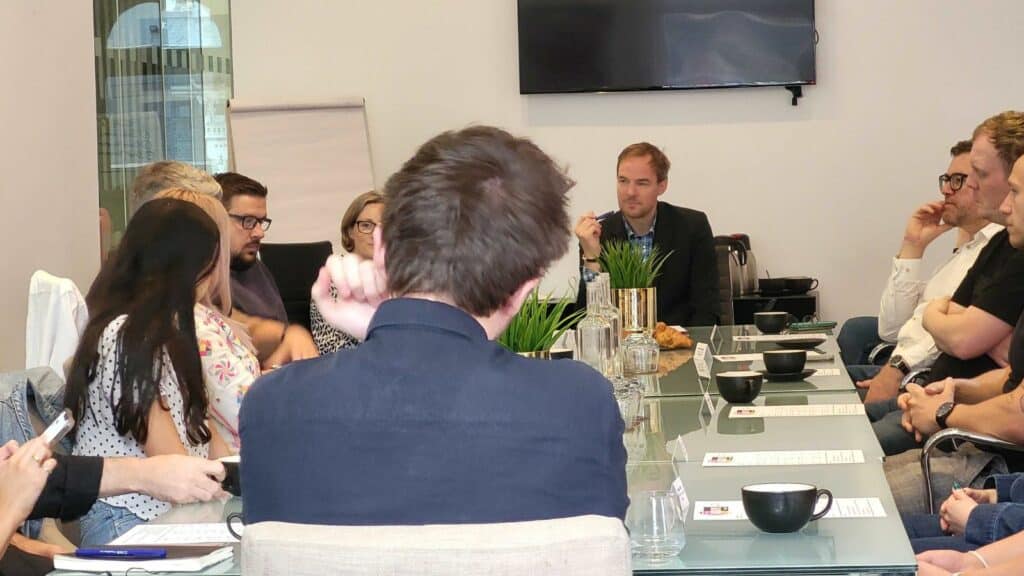
Ross Trigg (THG Studios) said if those in junior roles are remote, they “miss out on a lot more” because most of their training comes from senior staff. Attendees were in agreement that there is often a gap to plug with more senior creatives needed to train that next generation of talent.
On retention, Jo Taylor (TfGM) said although TfGM offers a good package, there are limitations the public sector can offer in comparison to the attractive packages the private sector can provide. “Most of the people that want to work for TfGM are there because they want to do good and help Greater Manchester.”
Shore (McCann Leeds) said there is a big challenge and financial pressure when it comes to getting the package and culture right. “More than anything, we try to create space to help people thrive. It can be challenging when you’re hybrid working as a lot of that culture stuff comes from creativity and sharing.”
Junior staff tend to be attracted by “sexy initiatives” said Rick Guttridge (Smoking Gun), and ultimately the love of the job and offering things “money can’t buy”, such as a shoot with high-profile celebs or stays at a ski resort, can often be a big way to keep people in the industry.
But there are pros and cons to company benefits, the group discussed how they’d heard about a company offering unlimited holidays but quickly had to reverse that decision when some staff were abusing it.
Ultimately, it’s about getting the right individual in and them having the right values and ethos, said Trigg (THG Studios).
Creating an environment where culture can thrive
There’s no “one size fits all response” at THG, explained Trigg (THG Studios). Scott (THG Studios) agreed, at THG Studios, there is flexible working with a number of days in the studio to support collaboration which is important for the creative team.
Prior (Prolific North) asked whether staff are hybrid or remote working, does it lead to better or worse creative work?
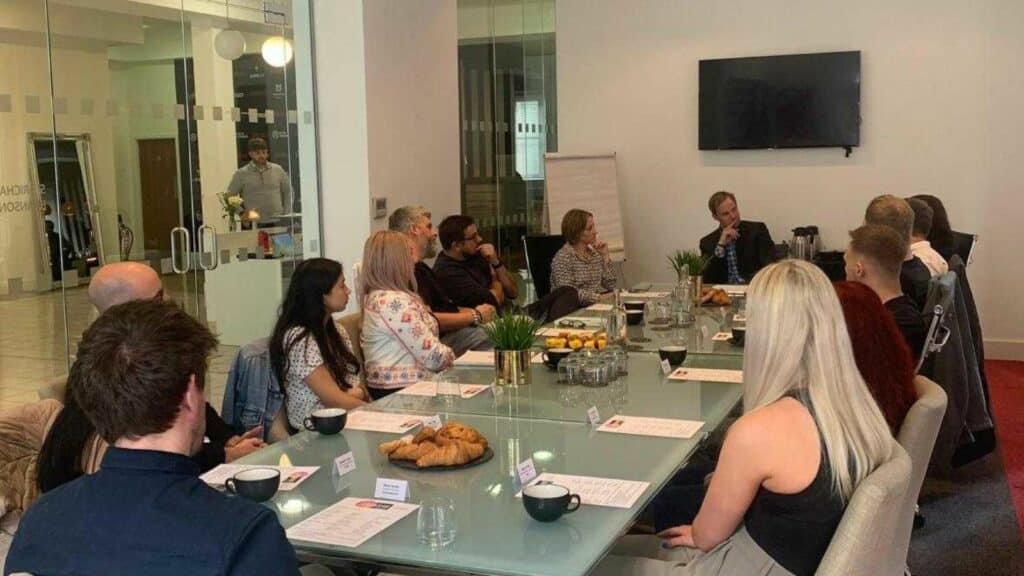
Nothing beats “looking each other in the whites of the eyes,” said Guttridge (Smoking Gun). Although Zoom is great, nothing beats face-to-face interactions to facilitate creativity and to train up junior staff. Remote working can pose its challenges to keep that culture together, at Smoking Gun the team are now in the office three days a week but with flexibility.
With a team of 22 at McCann Leeds, Gavin Shore asked whether there’s a difference with the size of creative business too. There’s no “magic formula” but choosing when to get together – whether that’s physical or virtual – is all about getting that balance right to lead towards those creative “happy accidents”.
There are now 21 staff at Crowd Network, said Steve Jones. Looking back 12 months when there were 10 to 11 staff it seemed easier, but suddenly now that the company has doubled in size, teams can splinter off. It has become a challenge to keep that same culture the smaller team initially built up.
At Digia, with a small team of four people there’s a “creative buzz” in the office, with “all hands on deck” explained Jason Yeoman. It’s not the same on Zoom and it helps culture when there’s an understanding about staff lives outside of work.
For Taylor (TfGM) who leads a team of 28, they approach it in the same way as content by testing and learning. It can be difficult to rely on the wider culture, especially for large organisations as teams often don’t feel connected. With two days in the office, more staff across marketing/studio/digital and social teams are starting to enjoy coming back into the office.
The group agreed that often there’s a balance between oversharing with staff or not sharing enough. Everyone should have a commercial outlook, said Guttridge (Smoking Gun), and you have to be honest with your team. Whereas Carla Nuttall (TfGM) explained companies can often go too far, trying not to scare staff about realities can be a challenge.
At Glasgows, Jones said the company has grown by 12 staff in a year and explaining that to people, along with the company’s investment in its tech capabilities, can add fear. But it’s all about getting the balance right.
Fear about financials, deadlines or pressures can hinder creativity, said Shore (McCann Leeds). Creatives work best when “slightly anarchic” but the best creative work comes from a culture where staff can follow rules but break some too, leading to the “unexpected”. Louise Jones (McCann Leeds) agreed, creatives can become “spooked so easily” if you’re too open.
It’s not just about where creatives work, the fallout from the pandemic and cost of living crisis is continuing to bite. For Glasgows, more public sector clients are wanting more for less money so the company is having to be more creative with what it pitches.
Marketing directors on the client side don’t seem as willing to take a leap anymore, often agencies are writing the brief and there seems to be more of a focus on performance than brand.
Keeping up with tech and AI – Is it an opportunity or threat?
On keeping up with the latest advancements in technology, Shore (McCann Leeds) said you can only be good at so many things but it’s good to have a rounded knowledge. AI will play a part in making some elements of projects cheaper and quicker to do, but he warned there will be some casualties across the industry.
For Tom Littler (Glasgows), he’s used it for brainstorming while at THG Studios, Scott said he’s seen a big use for storyboards and believes it will almost replace production briefs in future after seeing how big platforms such as Adobe, and especially Canva, have invested heavily into AI features. “Client side, if Canva gets that right we are in trouble in terms of higher ideas and strategic thinking.”
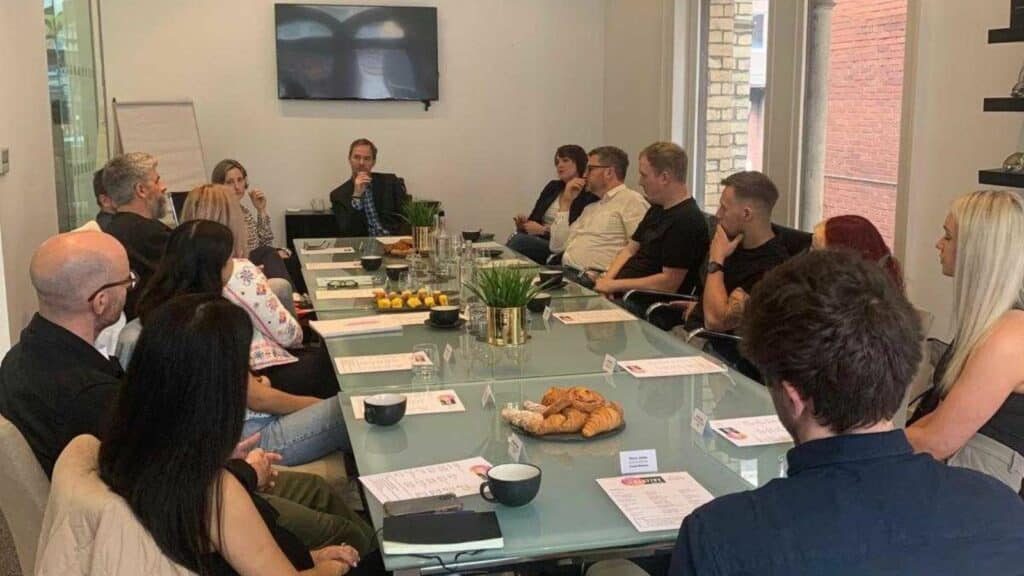
Maisie Trelfa (Digia) explained it’s great for idea generation for social media and has played around using Photoshop’s AI features.
But the fear is that it will hit junior staff the most, said Shore (McCann Leeds), as there will always be a need for a senior member of the team to point AI in the right direction. “It’s already a scary time for juniors coming into industry with focus on getting work out the door. For AI to start taking some of those volume-based jobs like content creation/visualisation… it’s a big shock.”
From copyright challenges such as not knowing if you own an IP if you commission an AI music track to deep fakes, the group agreed it certainly poses its challenges although it’s clearly part of the future creative mix.
Taylor (TfGM) said brand building and storytelling all comes from human emotion and interaction which AI will never be able to accurately replicate. A human will always be needed to make sure it’s positioned in the right way to represent a brand.
For Elizabeth Taylor (Premier), the company’s TV/film department has been affected by the current actors’ strikes over the use of AI. Junkets, premieres and big events have been scrapped which is a “life heart” of campaigns. “We don’t know how long it will last or what will happen, so that’s scary.”
Despite the doom over AI, Prior (Prolific North) asked if there is an opportunity there for creative companies to harness AI now.
It’s highlighted how agencies are often their own worst enemies, agreed Gavin Shore (McCann Leeds), by offering things like free pitches. Scott (THG Studios) said the creative industry can’t sleep on it, it needs to “adopt it or we’ll die”.


